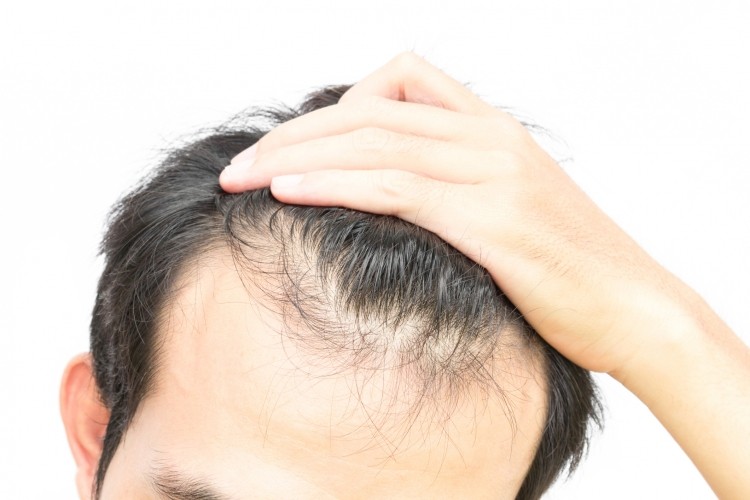Powerful native trees: US firm files patent on açaí-pink lapacho blend for hair growth

Açaí palm trees are native to Brazil and Peru and pink lapacho or 'pink trumpet tree' is the national tree of Paraguay, native to Central and South America.
Writing in its international patent, proprietary nutraceutical specialist Zivmas LLC said it had developed a composition for non-medicinal treatment of hair loss and/or nourishment as well as rejuvenation of hair, skin and nails. The composition, it said, could be formulated into a dietary supplement or functional food and beverage products.
Zivmas said whilst hair loss, specifically the genetic condition androgenic alopecia (AGA), could be treated with drug therapy and human hair transplantation, both had limitations. Transplantable hair, for example, was costly and limited in supply and approved drugs like topical minoxidil gave only temporary effects and could create adverse reactions and oral finasteride had several associated side-effects, including infertility problems in men.
“There remains a need for new drugs and therapies which would prevent hair loss and enhance hair growth without significant side effects,” Zivmas wrote in its patent filing.
Its blend, made using hydroalcoholic extracts of Euterpe oleracea (açaí palm); Tabebuia impetiginosa (pink trumpet tree); Olea europaea (European olive); and Coffea arabica (Arabian coffee) with potential for additional zinc, vitamin D3, magnesium and calcium, relates to the company's recently-trademarked nutraceutical Phyllotex4.
In vitro results 'really impressive'
Speaking to NutraIngredients-LATAM, Monica Schulze-Hodges, co-founder of Zivmas, said the company had been working on the development for two years with the inventor, a Brazilian PhD Pharmacologist.
“During that time, we have successfully completed the lab research to prove the connection between Phyllotex4's patent-pending formula and the health/growth of hair follicle cells,” Schulze-Hodges said. Lab tests on both female and male hair follicle cells had been “really impressive”.
In its patent filing, Zivmas said hair follicle growth and regeneration were both “tightly controlled by several growth factors”.
Hormone levels in the human body, for example, specifically the androgens testosterone and dihydrotestosterone (DHT), triggered hair loss by stimulating the expression of transforming growth factor-beta1 (TGF-β1) - a secreted protein recently coined 'the hair follicle assassin'. Another group of cells – keratinocytes – played a critical role in hair follicle regeneration.
The company noted that “several natural substances” had been identified that “may influence” the expression of hair growth factors. Specifically, it said some plants produced “anti-hair loss effects” by inhibiting 5α-reductase – an enzyme in the body involved in converting testosterone into DHT.
Zivmas said in vitro testing had shown its blend did not work as a DHT blocker, but rather downregulated the expression of TGF-β1 protein. “It is postulated that the mechanism of action of the compositions may be through one or more antioxidant, vasorelaxant and anti-inflammatory activities by one or more of the components of the compositions of this disclosure,” it wrote.
“...Without wishing to be bound by a theory, the present compositions are based on synergistic effects of the plant and mineral constituents acting together on cell proliferation of hair tissue, rescuing damaged cells from the oxidative stress and decreasing the expression of TGF-β1 protein.”
Additionally, unlike the oral drug finasteride, the blend did all this without affecting the DHT production and associated fertility problems.
Tracking effects in users
Effects of the blend, when consumed at levels of 0.5mg and 500mg 1-4 times per day, could be seen after continuous use of at least 4-6 months, Zivmas said. Testing showed daily doses were needed to “maintain the proliferative effect” in the cells.
Schulze-Hodges said Zivmas was now tracking effects in a “diverse group of users” which had, so far, supported the lab findings, including feedback on less hair shedding and new hair growth.
Asked how much potential there was for natural supplementation to promote hair growth and rejuvenation, Schulze-Hodges said: “We think there's huge market potential”, particularly as the supplement also reduced inflammation and supported the overall immune system at the same time.
Source: WIPO International Patent No. 2019028214
Title: “Composition and method for promoting hair growth”
Published: February 7, 2019. Filed: August 2, 2018.
Author: Zivmas LLC – Y. Korchia-Maor





